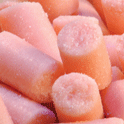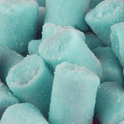|
|
过去,西方式饲料是在以谷物为主的粗饲料中加入高水平的脂肪和胆固醇制成的。加入的成份可以稀释其它的营养因子(如维他命、矿物质、蛋白质等)和非营养因子(如植物雌激素),因此这些饲料在动脉粥样硬化研究中的应用多被诟病(5)。为了避免这个问题,纯化饲料配方的成分向公众开放(如AIN- 76A)且可以方便地修改,仅仅加入脂肪热量(如奶油、氢化椰子油)来替代碳水化合物热量(如蔗糖,玉米淀粉)就可以改变动脉粥样硬化的表型。这种方法可以保持营养对卡路里比率不变。这是非常重要的,因为动物通常是为摄取热量而吃,而不注重食物重量。此外,以酪蛋白为基础的纯化饲料并不含有植物雌激素(或其他植物化学物质),而典型以谷物为主的粗饲料则有高度可变的同类物质(6)。由于含有植物雌激素的成分已被证明在多种啮齿目动物模型中可以影响动脉粥样硬化发生和脂蛋白代谢(7-13),纯化的西方式饲料的应用可以提供一个干净的试剂来诱导该病症。话虽如此,由于遗传差异,并非所有的啮齿目动物模型都会给指定西方式纯化饲料相同的反应。本综述将突出那些常用的能够在各种啮齿目动物模型中影响低密度脂蛋白胆固醇和动脉粥样硬化的膳食因子,以及使用这些疾病诱导模型的潜在好处和相关缺点。
野生型小鼠和大鼠
野生型小鼠,如C57BL/6小鼠,对动脉粥样硬化比较抗拒,但在特定条件下可以发展出轻度动脉粥样硬化。不同于人类,它们通常有比例非常低的总胆固醇和低密度脂蛋白胆固醇,且血液循环中的大部分胆固醇来自高密度脂蛋白胆固醇,这样有助于提高它们对动脉粥样硬化的抵抗力。西方式饲料含有比较高水平(大概35kcal%脂肪)的饱和脂肪(来自可可脂,椰子油,或奶油)、胆固醇(?0.5-1%重量比)和胆酸(?0.1-0.5%重量比),因此具有应用12周后在某些小鼠品系中诱导总胆固醇和低密度脂蛋白胆固醇升高和轻度动脉粥样硬化(如胆固醇负载泡沫细胞、脂肪堆积或条纹)的能力(14-16)。胆酸的存在不但帮助胆固醇和脂肪吸收,而且抑制胆固醇转化为胆汁(17)。后者降低了胆固醇的输出并增加了其存量(特别是非高密度脂蛋白胆固醇),从而允许动脉粥样硬化在易受影响的小鼠品系中发生。虽然诱导某些小鼠产生动脉粥眼硬化是可能的,重要的是要认识到,胆酸的存在可以影响控制与调节脂蛋白代谢和炎症有关基因的转录因子,这两者在动脉粥样硬化诱发过程中很重要(16,17),且可以在某些小鼠品系中促进胆结石的发生(18,19)。
与小鼠一样,大鼠常用远交系(如SD,Wistar)通常有高水平的高密度脂蛋白胆固醇和低水平的低密度脂蛋白胆固醇。西方型饲料(?45kcal%的脂肪来自氢化椰子油),甚至含高胆固醇水平(?1%重量比)和胆汁酸(0.25 - 0.5%重量比)的低脂肪饲料(?12kcal%脂肪来自玉米油),可以促使SD或Wistar大鼠总胆固醇和低密度脂蛋白胆固醇水平升高(20-22),很有可能通过减少胆酸排放的方式(23)。这些指数提高本身并不能促进大鼠动脉粥样硬化,除非把甲状腺激素抑制剂 (2 -硫脲嘧啶,?0.5%重量比)添加到饲料中(24)。然而,经过选择性自发突变基因育成鼠如JCR:LA肥胖大鼠则可以发展出高胆固醇血症,并在没有胆酸或甲状腺激素抑制剂的情况下对膳食胆固醇敏感(25)。
仓鼠
如同大鼠和小鼠,仓鼠通常具有高比例的高密度脂蛋白胆固醇。但是,西方式的高胆固醇膳食(?0.5%重量比)和 SF(15 - 20%牛油脂肪重量比)在不加入胆酸的情况下在短短的6个星期内 能提高血浆总胆固醇和低密度脂蛋白胆固醇并且促进明显的动脉粥样硬化(即脂肪条纹,泡沫细胞)(26)。仓鼠不需要胆酸是因为膳食胆固醇(高达1%重量比)对他们的胆汁酸合成途径的影响不大 (20),让多余的膳食胆固醇进入血液循环,而不是转化为胆汁酸和排泄的粪便。此外,这些动物具有与人类(不是小鼠和大鼠)一样的胆固醇酯转移蛋白,它允许血浆胆固醇从高密度脂蛋白转移到低密度脂蛋白粒子中。某些饱和脂肪(相对于不饱和脂肪)和胆固醇都或多或少可以促进这一路径(27),而这与它们减少低密度脂蛋白胆固醇摄取的能力(28)相结合,可使低密度脂蛋白胆固醇显著升高并最终诱导动脉粥样硬化。这些动物都对某种饱和脂肪高度敏感,例如含高水平来自氢化椰子油(月桂酸肉豆蔻酸)的可以提高胆固醇的饱和脂肪的西方型饲料比含高胆固醇(0.15%)和低胆固醇脂肪如可可黄油(棕榈酸,油酸和硬脂酸)的饲料,更能促进主动脉胆固醇的积累(29)。此外,膳食蛋白质的类型也可影响低密度脂蛋白胆固醇水平与动脉粥样硬化,例如喂食酪蛋白和乳清蛋白的仓鼠比那些喂食同等数量大豆蛋白的仓鼠要有更高水品的低密度脂蛋白胆固醇。和人类一样,雄性可能比雌性更容易受影响(11)。
豚鼠
不像其他啮齿目动物,豚鼠在喂食低脂/低胆固醇饲料时的的胆固醇概况与大多数人类相似(较高的低密度脂蛋白胆固醇的比例)。如同仓鼠,它们也有胆固醇酯转移蛋白并且不需要胆酸就可以诱导动脉粥样硬化和胆固醇水平升高(31,32)。它们对膳食中脂肪酸组成高度敏感,如含高水平饱和脂肪(如棕榈仁油,?80%饱和脂肪)的西方式饲料在无膳食胆固醇情况下可以提高总胆固醇和低密度脂蛋白胆固醇水平, 相对于含有较低饱和脂肪的饲料来说(31)。蛋白质种类(如高酪蛋白与大豆蛋白比)(32),或碳水化合物(如高蔗糖)(33)可以导致病情恶化。加入胆固醇 (至少可达0.3%,重量比)的西方式的膳食可导致总胆固醇和低密度脂蛋白胆固醇水平进一步升高,在12周后诱发动脉粥样硬化病变(即脂肪条纹)(34-36)。碳水化合物与脂肪比率也已经被发现对促进动脉粥样硬化有重要意义,如含高胆固醇(0.25%,重量比)高糖(42kcal%)和适度高脂肪(35kcal%)饲料比那些低糖(11kcal%)和高脂(55kcal%)的饲料更容易促进动脉粥样硬化低碳水化合物(37)。
转基因小鼠模型
最近,更容易发生动脉粥样硬化的转基因小鼠模型已被研发出来,该模型可以产生类似在人类发现的动脉粥样硬化斑块。一些在动脉粥样硬化研究中使用的知名的转基因小鼠的例子包括低密度脂蛋白受体(LDLR)和载脂蛋白E(apoE)失效小鼠,这些小鼠的基因突变会阻碍循环胆固醇的肝脏清除。使用加入胆固醇(0.15% - 1.25%重量比)且无胆酸的西方式饲料12周后可以诱导低密度脂蛋白受体失效小鼠产生显著动脉粥样硬化病变(38-40)。病变的发展在载脂蛋白E基因失效且喂食了西方式饲料的小鼠身上是非常迅速的。动脉粥样硬化的开始阶段(即脂肪条纹病变)可在喂食6个星期后发现(41)。在这些小鼠模型中, 对动脉粥样硬化的主要影响被认为是膳食胆固醇,而非脂肪的水平(42-44),但在低脂肪纯化饲料中可能存在至少一定数量的膳食胆固醇(45)。虽然非常高脂饲料(如60kcal%脂肪)对动脉粥样硬化有一定诱发能力,在这些饲料中加入胆固醇后可以在低密度脂蛋白受体失效小鼠中促进更多动脉粥样硬化(46)。此外,研究人员可根据需要来操作脂肪酸,甚至碳水化合物形式(即果糖, 蔗糖)以达到修改动脉粥样硬化表型的目的(39,42,47)。
Reference List
1. Pearson,TA, Blair,SN, Daniels,SR, Eckel,RH, Fair,JM, Fortmann,SP, Franklin,BA, Goldstein,LB, Greenland,P, Grundy,SM, Hong,Y, Miller,NH, Lauer,RM, Ockene,IS, Sacco,RL, Sallis,JF, Jr., Smith,SC, Jr., Stone,NJ, Taubert,KA: AHA Guidelines for Primary Prevention of Cardiovascular Disease and Stroke: 2002 Update: Consensus Panel Guide to Comprehensive Risk Reduction for Adult Patients Without Coronary or Other Atherosclerotic Vascular Diseases. American Heart Association Science Advisory and Coordinating Committee. Circulation 106:388-391, 2002
2. Libby,P, Ridker,PM, Maseri,A: Inflammation and Atherosclerosis. Circulation 105:1135-1143, 2002
3. Van Gaal,LF, Mertens,IL, De Block,CE: Mechanisms linking obesity with cardiovascular disease. Nature 444:875-880, 2006
4. Hegsted,DM, McGandy,RB, Myers,ML, Stare,FJ: Quantitative effects of dietary fat on serum cholesterol in man. Am J Clin Nutr 17:281-295, 1965
5. Cybulsky,MI, Lichtman,AH, Haijra,L, Iiyama,K. Leukocyte adhesion molecules in atherogenesis: Clinica Chimica Acta 286:207-218, 1999
6. Thigpen,JE, Setchell,KD, Ahlmark,KB, Locklear,J, Spahr,T, Caviness,GF, Goelz,MF, Haseman,JK, Newbold,RR, Forsythe,DB: Phytoestrogen content of purified, open- and closed-formula laboratory animal diets. Lab Anim Sci. 49:530-536, 1999
7. Brown,NM, Setchell,KD: Animal models impacted by phytoestrogens in commercial chow: implications for pathways influenced by hormones. Lab Invest 81:735-747, 2001
8. Mezei,O, Banz,WJ, Steger,RW, Peluso,MR, Winters,TA, Shay,N: Soy isoflavones exert antidiabetic and hypolipidemic effects through the PPAR pathways in obese Zucker rats and murine RAW 264.7 cells. J Nutr. 133:1238-1243, 2003
9. Kirk E, Sutherland P, Wang S, Chait A, LeBoeuf R: Dietary isoflavones reduce plasma cholesterol and atherosclerosis in C57BL/6 mice but not LDL receptor-deficient mice. J Nutr 128:954-959, 1998
10.Torvar-Palacio C, Potter SM, Hafermann JC, Shay NF: Intake of soy protein and soy protein extracts influences lipid metabolism and hepatic gene expression in gerbils. J Nutr 128:839-42, 1998
11.Blair,RM, Appt,SE, Bennetau-Pelissero,C, Clarkson,TB, Anthony,MS, Lamothe,V, Potter,SM: Dietary soy and soy isoflavones have gender-specific effects on plasma lipids in Golden Syrian F1B Hybrid Hamsters. J Nutr 1323585-3591, 2002
12.Ascencio,C, Torres,N, Isoard-Acosta, F, Gomez-Perez,FJ, Hernandez-Pando,R, Tovar,AR: Soy protein affects serum insulin and hepatic SREBP-1 mRNA and reduces fatty liver in rats. J Nutr 134:522-529, 2004
13. Adams,MR, Golden,DL, Anthony,MS, Register,RC, and Koudy Williams,J: The inhibitory effect of soy protein isolate on atherosclerosis in mice does not require the presence of LDL receptors or alteration of plasma lipoproteins. J Nutr 132:43-49, 2002
14. Nishina,PM, Wang,J, Toyofuku,W, Kuypers,FA, Ishida,BY: Atherosclerosis and plasma and liver lipids in nine inbred strains of mice. Lipids 28:599-605, 1993
15. Nishina,PM, Lowe,S, Verstuyft,J, Naggert,JK, Kuypers,FA, Paigen,B: Effects of dietary fats from animal and plant sources on diet-induced fatty streak lesions in C57BL/6J mice. J Lipid Res. 34:1413-1422, 1993
16. Nishina,PM, Verstuyft,J, Paigen,B: Synthetic low and high fat diets for the study of atherosclerosis in the mouse. J Lipid Res 31:859-869, 1990
17. Ando,H, Tsuruoka,S, Yamamoto,H, Takamura,T, Kaneko,S, Fujimura,A: Regulation of cholesterol 7alpha-hydroxylase mRNA expression in C57BL/6 mice fed an atherogenic diet. Atherosclerosis 178(2):265-269, 2005
18. Xu,G, Zhao,L, Fuchs,M: Differences between hepatic and biliary lipid metabolism and secretion in genetically gallstone-susceptible and gallstone-resistant mice. Chin Med J (Engl.) 115:1292-1295, 2002
19. Khanuja,B, Cheah,YC, Hunt,M, Nishina,PM, Wang,DQ, Chen,HW, Billheimer,JT, Carey,MC, Paigen,B: Lith1, a major gene affecting cholesterol gallstone formation among inbred strains of mice. Proc Natl Acad Sci USA 92(17):7729-7733, 1995
20.Jeong,WI, Jeong,DH, Do,SH, Kim,YK, Park,HY, Kwon,OD, Kim,TH, Jeong,KS: Mild hepatic fibrosis in cholesterol and sodium cholate diet-fed rats. J Vet Med Sci 67:235-242, 2005
21.Yokozawa,T, Cho,EJ, Sasaki,S, Satoh,A, Okamoto,T, Sei,Y: The protective role of Chinese prescription kangen-karyu extract on diet-induced hypercholesterolemia in rats. Biol Pharm Bull 29(4):760-765, 2006
22. Zulet,MA, Barber,A, Garcin,H, Higueret,P, Martinez,JA: Alterations in carbohydrate and lipid metabolism induced by a diet rich in coconut oil and cholesterol in a rat model. J Am Coll Nutr 18(1):36-42, 1999
23. Horton,JD, Cuthbert,JA, Spady,DK: Regulation of hepatic 7 alpha-hydroxylase expression and response to dietary cholesterol in the rat and hamster. J Biol Chem 270:5381-5387, 1995
24. Joris,I, Zand,T, Nunnari,JJ, Krolikowski,FJ, Majno,G: Studies on the pathogenesis of atherosclerosis. I. Adhesion and emigration of mononuclear cells in the aorta of hypercholesterolemic rats. Am J Pathol 113(3):341-358, 1983
25. Russell,JC, Graham,SE, Richardson,M: Cardiovascular disease in the JCR:LA-cp rat. Mol Cell Biochem 188(1-2):113-126, 1998
26. Kahlon,TS, Chow,FI, Irving,DW, Sayre,RN: Cholesterol response and foam cell formation in hamsters fed two levels of saturated fat and various levels of cholesterol. Nutr Res 16(8):1353-1368, 1996
27. Kurushima, H, Hayashi,K, Shingu,T, Kuga,Y, Ohtani,H, Okura,Y, Tanaka,K, Yasunobu,Y, Nomura,K, Kajiyama,G: Opposite effects on cholesterol metabolism and their mechanisms induced by dietary oleic acid and palmitic acid in hamsters. Biochim Biophys Acta 1258(3):251-256, 1995
28. Dietschy,JM: Dietary fatty acids and the regulation of plasma low density lipoprotein cholesterol concentrations. J Nutr 128:444S-448S, 1998
29. Alexaki,A, Wilson,TA, Atallah,MT, Handelman,G, Nicolosi,RJ: Hamsters fed diets high in saturated fat have increased cholesterol accumulation and cytokine production in the aortic arch compared with cholesterol-fed hamsters with moderately elevated plasma non-HDL cholesterol concentrations. J Nutr 134:410-415, 2004
30.Fernandez,ML, Volek,JS: Guinea pigs: A suitable animal model to study lipoprotein metabolism, atherosclerosis and inflammation. Nutr Metab 3:17, 2006
31. Fernandez,ML, Lin,EC, McNamara,DJ: Differential effects of saturated fatty acids on low density lipoprotein metabolism in the guinea pig. J Lipid Res 33: 1833-1842, 1992
32. Fernandez,ML, Wilson,TA, Conde,K, Vergara-Jimenez,M, Nicolosi,RJ: Hamsters and guinea pigs differ in their plasma lipoprotein cholesterol distribution when fed diets varying in animal protein, soluble fiber, or cholesterol content. J Nutr 129:1323-1332, 1999
33. Fernandez,ML, Vergara-Jimenez,M, Conde,K, Abdel-Fattah,G: Dietary carbohydrate type and fat amount alter VLDL and LDL metabolism in guinea pigs. J Nutr 126:2494-2504, 1996
34. Lin,EC, Fernandez,ML, Tosca,MA, McNamara,DJ: Regulation of hepatic LDL metabolism in the guinea pig by dietary fat and cholesterol. J Lipid Res 35:446-457, 1994
35. Cos,E, Ramjiganesh,T, Roy,S, Yoganathan,S, Nicolosi,RJ, Fernandez,ML: Soluble fiber and soybean protein reduce atherosclerotic lesions in guinea pigs. Sex and hormonal status determine lesion extension. Lipids 36:1209-1216, 2001
36. Zern,TL, West,KL, Fernandez,ML: Grape polyphenols decrease plasma triglycerides and cholesterol accumulation in the aorta of ovariectomized guinea pigs. J Nutr 133:2268-2272, 2003
37. Torres-Gonzalez,M, Volek,JS, Sharman,M, Contois,JH, Fernandez,ML: Dietary carbohydrate and cholesterol influence the number of particles and distributions of lipoprotein subfractions in guinea pigs. J Nutr Biochem, 17(11):773-9, 2006
38. Lichtman,AH, Clinton,SK, Iiyama,K, Connelly,PW, Libby,P, Cybulsky,MI: Hyperlipidemia and atherosclerotic lesion development in LDL receptor-deficient mice fed defined semipurified diets with and without cholate. Arterioscler Thromb Vasc Biol 19:1938-1944, 1999
39. Collins,AR, Meehan,WP, Kintscher,U, Jackson,S, Wakino,S, Noh,G, Palinski,W, Hsueh,WA, Law,RE: Troglitazone inhibits formation of early atherosclerotic lesions in diabetic and nondiabetic low density lipoprotein receptor-deficient mice. Arterioscler Thromb Vasc Biol 21:365-371, 2001
40. Joseph,SB, McKilligin,E, Pei,L, Watson,MA, Collins,AR, Laffitte,BA, Chen,M, Noh,G, Goodman,J, Hagger,GN, Tran,J, Tippin,TK, Wang,X, Lusis,AJ, Hsueh,WA, Law,RE, Collins,JL, Willson,TM, Tontonoz,P: Synthetic LXR ligand inhibits the development of atherosclerosis in mice. Proc Natl Acad Sci U.S.A. 99:7604-7609, 2002
41. Nakashima,Y, Plump,AS, Raines,EW, Breslow,JL, Ross,R: ApoE-deficient mice develop lesions of all phases of atherosclerosis throughout the arterial tree. Arteroscler Thromb 14:133-140, 1994
42. Merat,S, Casanada,F, Sutphin,M, Palinski,W, Reaven,PD: Western-type diets induce insulin resistance and hyperinsulinemia in LDL receptor-deficient mice but do not increase aortic atherosclerosis compared with normoinsulinemic mice in which similar plasma cholesterol levels are achieved by a fructose-rich diet. Arterioscler Thromb Vasc Biol 19:1223-1230, 1999
43. Wu,L, Vikramadithyan,R, Yu,S, Pau,Cl, Hu,Y, Goldberg,I, Dansky,HM: Addition of dietary fat to cholesterol in the diets of LDL receptor knockout mice: effects on plasma insulin, lipoproteins, and atherosclerosis. J Lipid Res 47:2215-2222, 2006.
44. Davis,HR, Compton,DS, Hoos,L, Tetzloff: Ezetimibe, an important cholesterol absorption inhibitor, inhibits the development of atherosclerosis in apoE knockout mice. Arterioscler Thromb Vasc Biol 21: 2032-2038, 2001
45. Teupser,D, Persky,AD, Breslow,JL: Induction of atherosclerosis by low-fat, semisynthetic diets in LDL receptor-deficient C57BL/6J and FVB/NJ mice: comparison of lesions of the aortic root, brachiocephalic artery, and whole aorta (en face measurement). Arterioscler Thromb Vasc Biol 23:1907-1913, 2003
46. Subramanian,S, Han,CY, Chiba,T, McMillen,TS, Wang,SA, Haw,A, Kirk,EA, O’Brien,KD, Chait,A: Dietary cholesterol worsens adipose tissue macrophage accumulation and atherosclerosis in obese LDL receptor-deficient mice. Arterioscler Thromb Vasc Biol 28(4): 685-691, 2008
47. Merkel,M, Velez-Carrasco,W, Hudgins,LC, Breslow,JL: Compared with saturated fatty acids, dietary monounsaturated fatty acids and carbohydrates increase atherosclerosis and VLDL cholesterol levels in LDL receptor-deficient, but not apolipoprotein E-deficient, mice. Proc Natl Acad Sci U.S.A. 98:13294-13299, 2001
|







